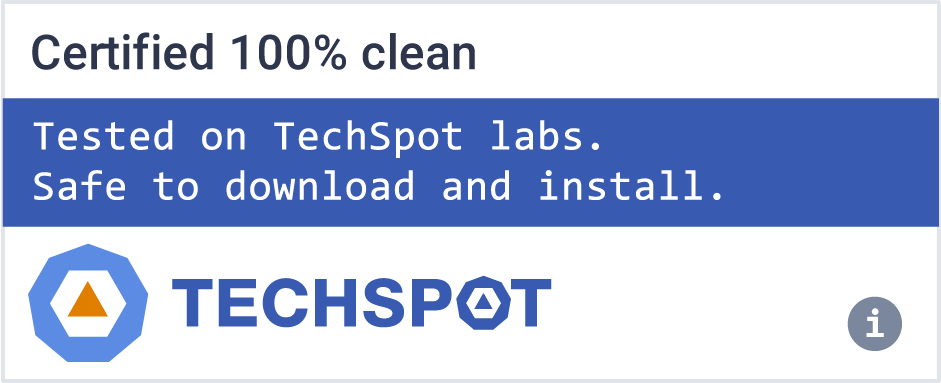Tor 2024 is free software and an open network that helps you defend against a form of network surveillance that threatens personal freedom and privacy, confidential business activities and relationships, and state security known as traffic analysis.
Tor is a network of virtual tunnels that allows people and groups to improve their privacy and security on the Internet. It also enables software developers to create new communication tools with built-in privacy features. Tor provides the foundation for a range of applications that allow organizations and individuals to share information over public networks without compromising their privacy.
Individuals use Tor to keep websites from tracking them and their family members, or to connect to news sites, instant messaging services, or the like when these are blocked by their local Internet providers. Tor's hidden services let users publish web sites and other services without needing to reveal the location of the site. Individuals also use Tor for socially sensitive communication: chat rooms and web forums for rape and abuse survivors, or people with illnesses.
Who uses the Tor Browser?
With Tor Browser having made Tor more accessible to everyday internet users and activists, Tor was an instrumental tool during the Arab Spring beginning in late 2010. It not only protected people's identity online but also allowed them to access critical resources, social media, and websites which were blocked.
Individuals use Tor to keep websites from tracking them and their family members, or to connect to news sites, instant messaging services, or the like when these are blocked by their local Internet providers. Tor's hidden services let users publish web sites and other services without needing to reveal the location of the site. Individuals also use Tor for socially sensitive communication: chat rooms and web forums for rape and abuse survivors, or people with illnesses.
Journalists use Tor to communicate more safely with whistleblowers and dissidents. Non-governmental organizations (NGOs) use Tor to allow their workers to connect to their home website while they're in a foreign country, without notifying everybody nearby that they're working with that organization.
Groups such as Indymedia recommend Tor for safeguarding their members' online privacy and security. Activist groups like the Electronic Frontier Foundation (EFF) recommend Tor as a mechanism for maintaining civil liberties online. Corporations use Tor as a safe way to conduct competitive analysis, and to protect sensitive procurement patterns from eavesdroppers. They also use it to replace traditional VPNs, which reveal the exact amount and timing of communication. Which locations have employees working late? Which locations have employees consulting job-hunting websites? Which research divisions are communicating with the company's patent lawyers?
A branch of the U.S. Navy uses Tor for open source intelligence gathering, and one of its teams used Tor while deployed in the Middle East recently. Law enforcement uses Tor for visiting or surveilling web sites without leaving government IP addresses in their web logs, and for security during sting operations.
What is Tor Browser?
The Tor Browser is the flagship product from the Tor Project. The web browser is based on a modified version of Mozilla Firefox ESR that includes extras like the Tor proxy, TorButton, TorLauncher, NoScript, and HTTPS Everywhere extensions.
How does the Tor Browser keep my internet activity anonymous?
The Tor Browser uses the Tor network, which consists of more than six thousand relays located worldwide, to hide the users' location and online traffic. This ensures anonymity and avoids your activities from being seen by others.
Is Tor better than a VPN?
Tor is not a VPN. Tor is a free browser similar to Chrome or Firefox, but it includes features that encrypt your IP address, making your browsing sessions private. A VPN (Virtual Private Network) is software that can change your IP address when you use any browser installed on your PC. To learn more about VPNs, you can read this article.
Journalists use Tor to communicate more safely with whistleblowers and dissidents. Non-governmental organizations (NGOs) use Tor to allow their workers to connect to their home website while they're in a foreign country, without notifying everybody nearby that they're working with that organization.
Groups such as Indymedia recommend Tor for safeguarding their members' online privacy and security. Activist groups like the Electronic Frontier Foundation (EFF) recommend Tor as a mechanism for maintaining civil liberties online. Corporations use Tor as a safe way to conduct competitive analysis, and to protect sensitive procurement patterns from eavesdroppers. They also use it to replace traditional VPNs, which reveal the exact amount and timing of communication. Which locations have employees working late? Which locations have employees consulting job-hunting websites? Which research divisions are communicating with the company's patent lawyers?
A branch of the U.S. Navy uses Tor for open source intelligence gathering, and one of its teams used Tor while deployed in the Middle East recently. Law enforcement uses Tor for visiting or surveilling web sites without leaving government IP addresses in their web logs, and for security during sting operations.
Welcome Screen
Our old screen had way too much information for the users, leading many of them to spend great time confused about what to do. Some users at the paper experiment spent up to 40min confused about what they needed to be doing here. Besides simplifying the screen and the message, to make it easier for the user to know if they need to configure anything or not, we also did a 'brand refresh' bringing our logo to the launcher.
Censorship circumvention configuration
This is one of the most important steps for a user who is trying to connect to Tor while their network is censoring Tor. We also worked really hard to make sure the UI text would make it easy for the user to understand what a bridge is for and how to configure to use one. Another update was a little tip we added at the drop-down menu (as you can see below) for which bridge to use in countries that have very sophisticated censorship methods.
Proxy help information
The proxy settings at our Tor Launcher configuration wizard is an important feature for users who are under a network that demands such configuration. But it can also lead to a lot of confusion if the user has no idea what a proxy is. Since it is a very important feature for users, we decided to keep it in the main configuration screen and introduced a help prompt with an explanation of when someone would need such configuration.
As part of our work with the UX team, we will also be coordinating user testing of this new UI to continue iterating and make sure we are always improving our users' experience. We are also planning a series of improvements not only for the Tor Launcher flow but for the whole browser experience (once you are connected to Tor) including a new user onboarding flow. And last but not least we are streamlining both our mobile and desktop experience: Tor Browser 7.5 adapted the security slider design we did for mobile bringing the improved user experience to the desktop as well.
What's New
All Platforms
- Bug tor-browser#42288: Allow language spoofing in status messages
Windows + macOS + Linux
- Bug tor-browser#42302: The allowed ports string contains a typo
- Bug tor-browser#42231: Improve the network monitor patch for http onion resources
- Bug tor-browser#42299: After adding incorrect bridge addres on user cannot go back to the Connection page
Linux
- Bug tor-browser#17560: Downloaded URLs disk leak on Linux
- Bug tor-browser#42306: Tor Browser crashes when extensions popups are opened with Wayland enabled
- Bug tor-browser-build#41017: Disable Nvidia shader cache
Build SystemAll Platforms
- Bug tor-browser-build#41027: Remove tb-build-04 and tb-build-05 from tools/signing/download-unsigned-sha256sums-gpg-signatures-from-people-tpo
- Bug tor-browser-build#40936: Revert tor-browser-build#40933
- Bug tor-browser-build#40995: Use cdn.stagemole.eu instead of cdn.devmole.eu in download-unsigned-sha256sums-gpg-signatures-from-people-tpo
- Bug rbm#40064: Using exec on project with no git_url/hg_url is causing warning
Windows + macOS + Linux
- Bug tor-browser-build#41031: Add command to unsign .mar files and compare with sha256sums-unsigned-build.txt
Windows
- Bug tor-browser-build#41030: Add command to unsign .exe files and compare with sha256sums-unsigned-build.txt
Android
- Bug tor-browser-build#41024: Fix android filenames in Release Prep issue templates

